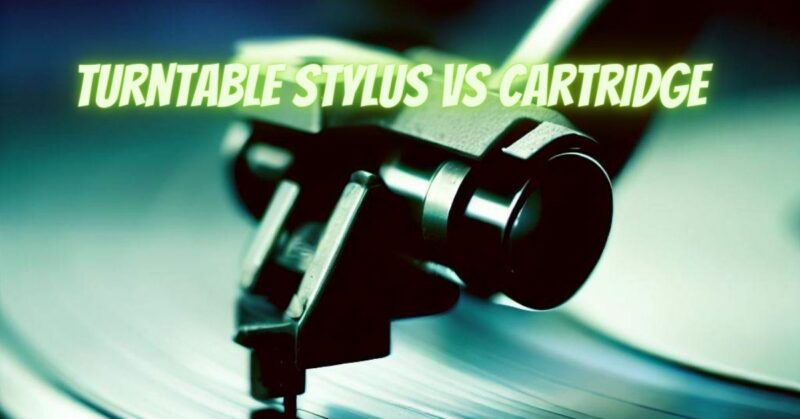In the world of turntables and vinyl playback, the terms “stylus” and “cartridge” are often used interchangeably, leading to confusion among enthusiasts. However, it is essential to recognize the distinction between these two critical components and understand their unique roles in the vinyl playback process. In this article, we explore the differences between the turntable stylus and cartridge, highlighting their importance and impact on the quality of your vinyl listening experience.
The Stylus:
The stylus, also known as the needle, is a small, diamond-tipped component that directly contacts the grooves on a vinyl record. As the record spins, the stylus traces the grooves, translating the mechanical movement into electrical signals. These electrical signals are then sent through the turntable’s tonearm and ultimately amplified and reproduced as sound through speakers or headphones.
The Cartridge:
The cartridge is the housing that holds the stylus. It contains magnets and coils that generate electrical signals from the mechanical movement of the stylus. These signals are a representation of the audio recorded on the vinyl record. Cartridges come in two primary types: Moving Magnet (MM) and Moving Coil (MC). Each type has distinct characteristics and sound qualities.
Differences Between Stylus and Cartridge:
- Function: The stylus is the physical component that comes into direct contact with the vinyl record, while the cartridge is the housing that holds the stylus and converts its mechanical movement into electrical signals.
- Contact with the Grooves: The stylus’s diamond tip tracks the grooves on the vinyl record, capturing the intricate details of the audio. The cartridge’s magnetic or coil components convert the stylus’s movement into electrical signals, which are then sent through the turntable’s tonearm.
- Upgrading and Replacement: Upgrading the stylus involves replacing the small diamond-tipped tip, while upgrading the cartridge involves replacing the entire cartridge housing, including the stylus. Different stylus profiles can be used with the same cartridge, offering variations in sound quality and tracking ability.
- Sound Characteristics: The stylus’s shape and material influence its tracking ability and sound characteristics, affecting the level of detail, frequency response, and fidelity. The cartridge type (MM or MC) also significantly impacts sound quality and tonal balance.
Importance in Vinyl Playback:
Both the stylus and cartridge play vital roles in the vinyl playback process and can significantly impact the quality of sound reproduction. The stylus’s shape and material determine how accurately it traces the grooves, affecting the level of detail and audio fidelity. The cartridge type (MM or MC) influences the overall tonal balance, dynamics, and resolution of the audio.
Maintenance and Care:
Proper maintenance and care of both the stylus and cartridge are essential to ensure optimal performance and extend their lifespan. Regularly cleaning the stylus and ensuring the proper tracking force and alignment are critical to preserving the stylus’s condition and preventing excessive wear on vinyl records.
In conclusion, understanding the distinction between the turntable stylus and cartridge is crucial for vinyl enthusiasts seeking to optimize their audio experience. The stylus is the physical component that tracks the grooves on the vinyl record, while the cartridge is the housing that holds the stylus and converts its movement into electrical signals. Both components play critical roles in vinyl playback, influencing sound quality, fidelity, and overall listening pleasure. Proper maintenance and care of the stylus and cartridge are essential to ensure exceptional sound reproduction and a prolonged vinyl listening journey filled with the rich and captivating sound of analog music. Happy spinning!


